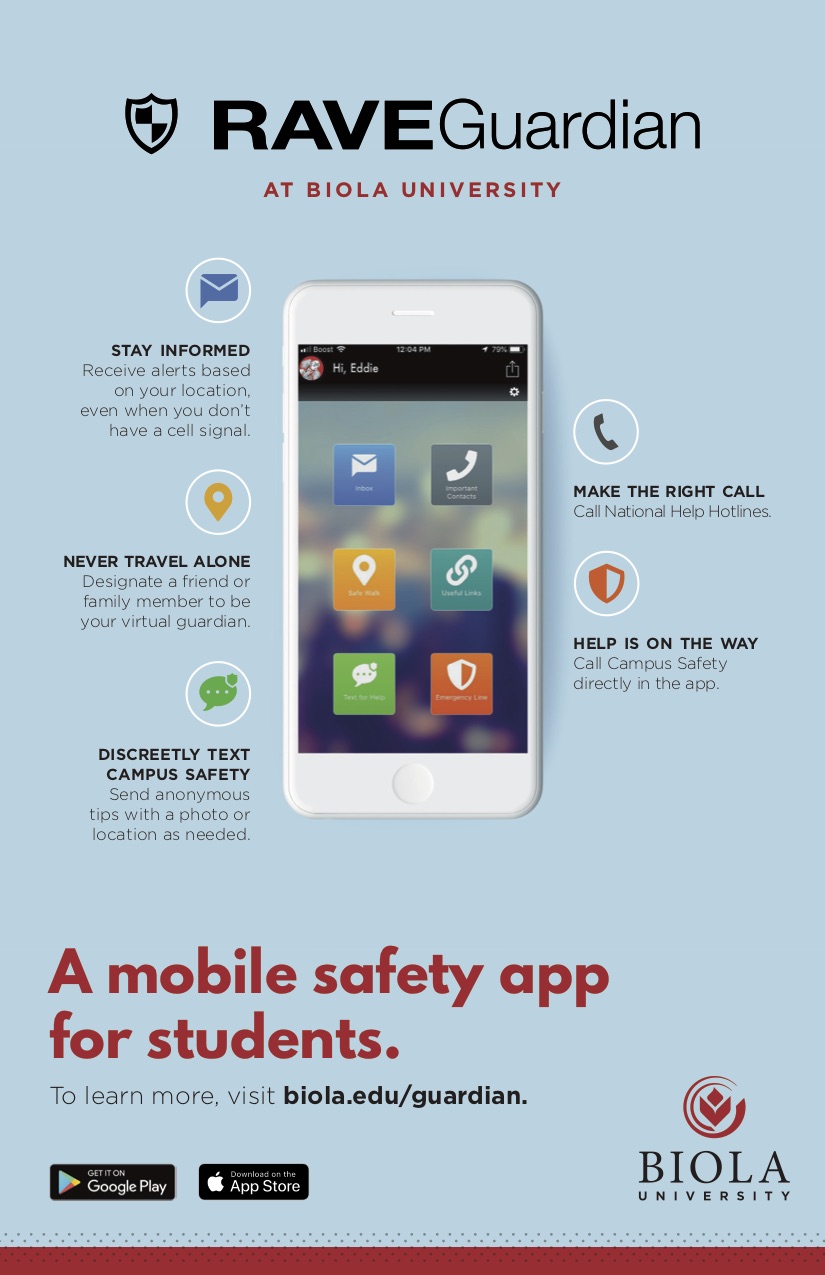Biola’s newest security addition is a public address system that provides students with more time to prepare in the event of a major earthquake. Along with the public address system, the Rave Guardian app has been put into effect to allow 24/7 communication with Campus Safety by text, call or email.
NEW SYSTEM, SAFER STUDENTS
According to Campus Safety Chief John Ojeisekhoba, Biola’s public address system works with U.S. Geological Survey technology that detects earthquakes early. The public address system works alongside the USGS and CalTech earthquake warning system to send alerts through the school’s public address speakers and has the ability to warn students 50 to 58 seconds before a major earthquake hits campus.
PERKS OF RAVE GUARDIAN
In addition, the Rave Guardian app works alongside the public address system to connect Campus Safety with students in any emergency situation. Ojeisekhoba says this system helps protect students by providing the ability to discreetly message or call Campus Safety in a matter of seconds. Security guards monitor the campus through computer screens and will receive any emergency calls that the app sends out within milliseconds. It was an easy decision, Ojeisekhoba expressed, to implement this dual security system.
“We’ve actually had some students actually use it over the last two weeks,” he said. “At least probably five or six times.”
TWO SYSTEMS IN PERFECT HARMONY
The Rave Guardian app and public address system go hand in hand because when one fails, the other is able to promote additional awareness of the emergency.
“We know very well that when we send text messages, some students may have their cell phone in their pocket, or may have it in their backpack. They may not see the message,” Ojeisekhoba explained. “So, we have been working aggressively with the Information Technology department to install public address systems on campus.”
There are currently five public address systems installed across campus, as well as 150 phones connected to it. According to Ojeisekhoba, Campus Safety intends to continue installing these systems in dormitories, hallways and auditoriums.
ASSESSING SYSTEMS THOROUGHLY
“Our goal is to keep students safe. That’s our number one priority,” Ojeisekhoba said. “Campus environment is not what it used to be. There are heightened concerns about safety. So, that’s why even after implementing this, we are not stopping there.”
In 2019 alone, the Gun Violence Archive has reported 294 mass shootings. The GVA defines a mass shooting as four or more shot or killed, not including the shooter. Mass shootings can be a risk everywhere, including schools.
Furthermore, students on university campuses can be at risk of sexual violence. The National Sexual Violence Resource Center reports one in five women are sexually assaulted while in college.
Campus Safety hopes Rave Guardian can further protect students. If you’re in danger or in an uncomfortable situation, the app allows you to contact Campus Safety discreetly. The public address system communicates emergencies both on and off-campus as well, according to Ojeisekhoba.
Campus Safety and Information Technology have thoroughly assessed the Rave Guardian app, but are continuing to look for improvements in the campus’s security technology, according to Ojeisekhoba.
“We will continue to assess,” he said. “We will assess how effective this program is, we will look at any potential areas we need to improve on and we will work at it to continue to improve on them. And if there is a system that is even better than this, we won’t hesitate to assess them as well.”
The Rave Guardian app is available in the App Store and Google Play.








